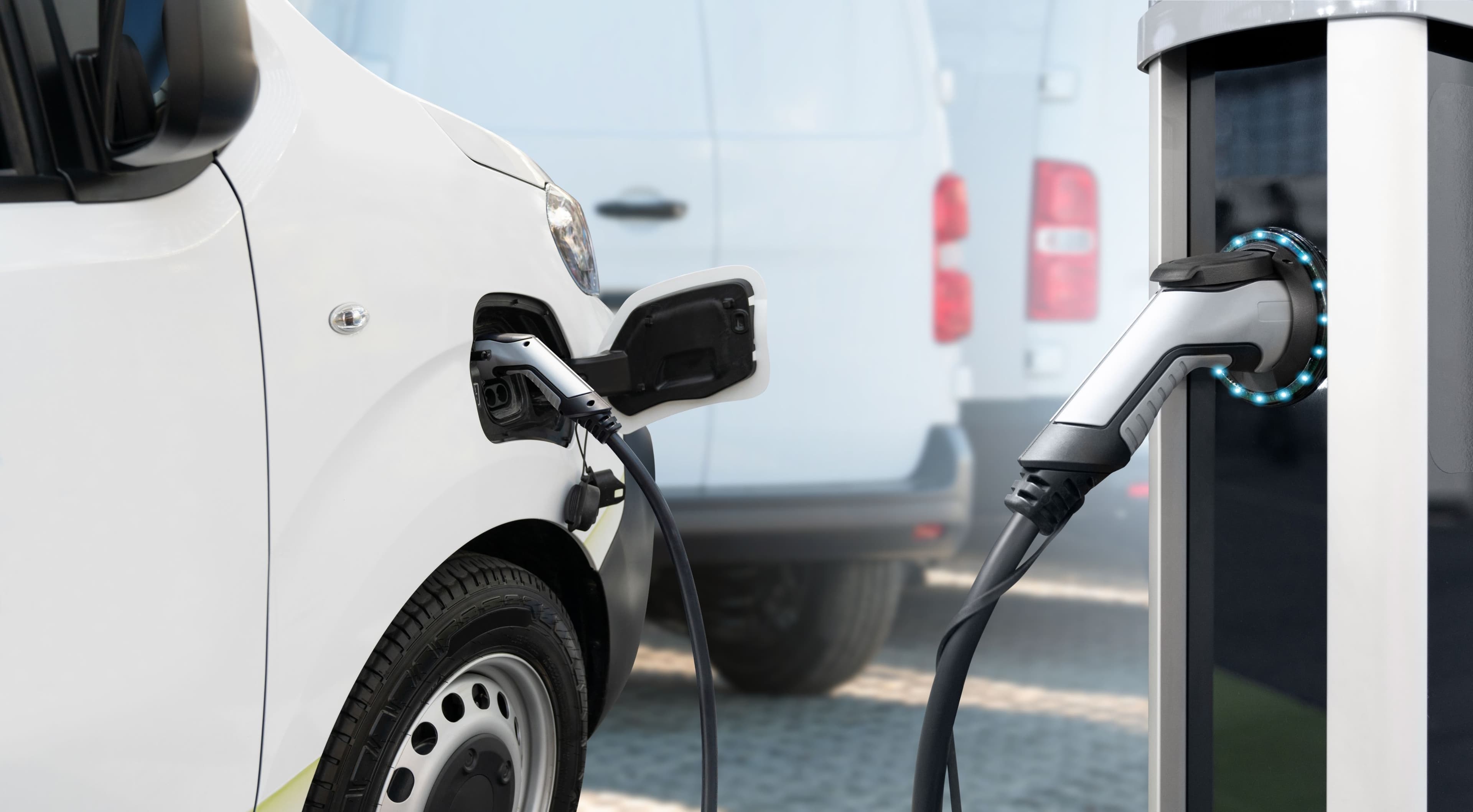
In 2022, the UK released 406.2 million tonnes of carbon dioxide and its equivalents into the atmosphere. While our annual emissions have fallen over the years, they’re still more than enough to be making an impact on the ozone layer. Climate change can worsen the impact of weather events, cause droughts and flooding across the globe, and lead native species to go extinct - not to mention impact the economy and your company’s stability. So how can businesses reduce their carbon footprint, and why should it be one of your priorities?
Structure a carbon reduction plan
Before you start reducing your carbon emissions, you’ll need to lay out your reduction goals. This can help to keep your company on-track and working towards net zero emissions long-term. Take your budget into account, alongside the size of your fleets, your current carbon footprint, and your estimated emission figures over the next business year. Drawing up a plan will help your company to predict its progress, budget for fleet changes and make operational adjustments to reduce your environmental impact.
Improve driver behaviour on the road
Bad driving habits can burn through gallons of fuel before you realise what’s happening. Rapid acceleration, driving in a low gear, riding the clutch and idling for hours all belch carbon emissions into the atmosphere, and your offsetting efforts will suffer for it. Monitoring your drivers’ behaviour is one of the best ways to catch these habits early, helping to preserve both the environment and your finances from excessive fuel usage.

Monitor the performance of your vehicles
Vehicle telematics help your fleet managers to keep track of how well your vehicles are performing. That includes monitoring the fuel consumption of your engines, as well as the speed, location and general health of each vehicle. With advanced telematic solutions, you’ll be able to run reports and view the overall performance of your fleet as well. Once you’ve pinpointed the problem areas, you can address issues far more efficiently and streamline your carbon reduction plan.
Conduct regular maintenance
Your vehicles are at their most fuel efficient when they’re fully serviced and healthy. It’s not always possible to keep your whole fleet in prime condition, but investing in regular maintenance can go a long way. Catching issues early helps to avoid carbon-heavy problems such as powering a faulty clutch, skidding on worn tyres and fuel residue building up inside the engine. Schedule check-ups for your vehicles at regular intervals and after long journeys to stop issues before they start.

Replace petrol and diesel vehicles with EVs
Electric cars are an excellent way to reduce your carbon footprint. Vast improvements in their technology is resulting in lengthened battery life and bolstering energy economy across the board. While heavy goods vehicles have fewer electrical alternatives, cars and vans can be swapped to EVs to improve your overall carbon footprint. Charging an EV fleet can be as simple as installing your own EV chargers to save money and mileage, or investing in charging cards to access EV ports across the country.
Replace old vehicles with fuel-efficient models
Not all vehicles can be replaced with EV alternatives. While this may change in the future, it’s unreasonable to expect fossil fuels to be removed from the equation entirely. There are still plenty of ways businesses can reduce their carbon footprints when operating HGVs, however, and most of them involve improving your general fuel economy. Old vehicles degrade over time, and are far less economical as a result. If your current fleet is outdated, investing in new vehicles or leasing fuel-efficient models can help to cut down your carbon footprint.

Invest in HVO diesel
HVO diesel - or hydrotreated vegetable oil - is a fossil-free diesel alternative designed to produce up to 90% less carbon dioxide when burned. That’s a significant cut to your carbon emissions, and it doesn’t require replacing your whole fleet to use it. Because HVO is so similar to diesel, it can be burned by most existing diesel tanks already on the road. You can also buy HVO fuel with a fuel card, making it one of the least invasive changes you can implement to reduce your carbon footprint.
Avoid unnecessary mileage
Vehicle tracking is the best way to determine whether your fleet is taking unnecessary detours. If your vehicles are burning an unnecessary amount of fuel to reach their destinations, using route planning software can help optimise your journeys and avoid traffic and bottlenecked roads. It can also cut down the time your drivers take to reach their destinations, increasing your overall efficiency.

Use carbon offsetting schemes
Radius has paired up with Forest Carbon to offer a carbon offsetting scheme on their fleet fuel cards. Schemes such as this can help balance out the carbon emissions produced by your vehicles, lowering your overall footprint and helping you to reach your eco goals more quickly. Some of the projects conducted by Forest Carbon, for instance, include planting woodland areas across the UK, as well as protecting trees in Guatemala, Uruguay, Peru and Bolivia from deforestation.
Partner with carbon neutral companies
Your carbon footprint is affected by the companies you do business with. The lower the emissions of your partners, the lower your footprint will be. Before you make arrangements with a new company, examine their sustainability clause and offsetting programs to see whether the arrangement will reduce or increase your environmental impact.

Continued monitoring
Once you’ve laid out a plan and put your solutions in place, you should take efforts to monitor your fleet. Regular reports will flag up the effect your changes are having on your emissions, and they can also highlight new problems for you to iron out along the way. Even after your company has achieved net zero emissions, you should continue to monitor your activities to maintain a carbon neutral footprint.
Why should businesses reduce their carbon footprint?
Aside from the environmental impact, there are several business benefits of reducing your carbon footprint. From complying with environmental standards in advance, to improving the standing of your company with the public. Here are a few ways that reducing emissions can pay off for both you and your business.
Preparing for the future: The UK aims to reach carbon neutrality by 2050. That involves a lot of new legislation, and potentially more to come in the next few decades. By reducing carbon emissions and aiming for net zero today, you’ll be meeting these future requirements well in advance.
Expanding your reach: If you aim to expand into other countries - or even some areas of the UK, such as London - you’ll need to comply with strict environmental standards. Aiming for carbon neutrality can open up a number of new areas to your company.
Improving your reputation: Eco-friendly practices are viewed favourably by the public, and unnecessary pollution is not. By aiming for carbon neutrality, you can improve the reputation of your company among customers, clients and third parties.
Carbon-conscious clients: When you aim for carbon neutrality, you become an attractive prospect for other companies looking to do the same. This can open up partnerships with a whole new demographic of clients.
The business case for sustainability
Making the shift to a greener fleet doesn’t just benefit the planet. It future-proofs your business, boosting your reputation, and attracting customers who share your values.

Use telematics to cut your fleets emissions
Kinesis telematics from Radius allows you to cut your carbon emissions by optimising routes, reducing fuel consumption, and promoting eco-friendly driving behaviors.